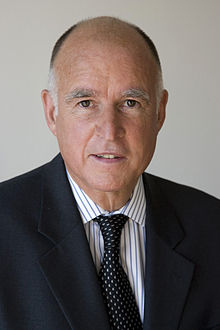Sacramento, CA…As the state’s economic recovery stretches into an eighth year – two years short of the longest on record – and with increasing uncertainty from Washington, Governor Edmund G. Brown Jr. today released a revised state budget that continues to plan for tougher times ahead, while maintaining spending on core programs such as education and child care. “Over the past four years, we have increased spending by billions of dollars for education, health care, child care and other anti-poverty programs. In the coming year, I don’t think even more spending will be possible,” said Governor Brown. “We have ongoing pressures from Washington and an economic recovery that won’t last forever.”

Under the May Revision, the $5.8 billion revenue shortfall forecast in January is now a $3.3 billion shortfall – based primarily on higher capital gains. Even so, the budget is considerably more constrained than in any year since 2012.
Some cuts from the January Budget remain, but the modestly improved fiscal outlook allows the May Revision to advance several key priorities, including:
Increasing Funding for Schools
The May Revision includes $1.4 billion in 2017-18 to continue implementation of the Local Control Funding Formula to 97 percent complete. The formula focuses most new funding to districts with low-income students, English learners and students in foster care. The increased funding also eliminates the deferral of funding that was included in the January Budget. For K-12 schools, funding levels will increase by about $4,058 per student in 2017-18 over 2011-12 levels.
For higher education, the May Revision continues to provide each university system and the community colleges with annual General Fund growth. In response to the State Auditor’s review of the University of California (UC) Office of the President, the May Revision sequesters $50 million in UC funding until such time that the Auditor’s recommendations and other UC commitments are implemented.
Keeping Child Care Funding On Track
The Governor’s January budget proposal called for a one-year delay in providing rate increases to child care providers that were reflected in the 2016 Budget Act. The May Revision proposes to restore this funding and maintain the $500 million child care package from the 2016 Budget.
Maintaining County Fiscal Health
Under current law, with the end of the Coordinated Care Initiative, county realignment funds would experience an increase in annual IHSS costs of about $600 million. The May Revision mitigates this increase in county costs by contributing $400 million from the General Fund and then smaller amounts in future years as realignment revenues grow.
Improving California’s Transportation System
This spring, the Legislature and Governor agreed on a historic transportation funding package – the Road Repair and Accountability Act of 2017 (SB 1). The funding package returns the gas tax’s purchasing power to 1994 levels and will provide $54 billion in new funding over the next decade, split evenly between state and local funding. The May Revision enhances oversight of Caltrans and allows the state and local governments to implement the SB 1 plan in a cost-effective manner without delay. The May Revision reflects the first $2.8 billion of new funding to:
–Focus on “fix-it-first” investments to repair neighborhood roads and state highways and bridges.
–Make key investments in trade and commute corridors to support continued economic growth and implement a sustainable freight strategy.
–Match locally generated funds for high-priority transportation projects.
–Invest in passenger rail and public transit modernization and improvement.
Reducing Pension Liabilities
The May Revision proposes a $6 billion supplemental payment to CalPERS with a loan from the Surplus Money Investment Fund – a step that will save the state $11 billion over the next two decades while continuing to reduce unfunded liabilities and stabilize state contribution rates. The General Fund share of the repayment will come from Proposition 2’s revenues dedicated to reducing debts and long-term liabilities.
Recognizing Budget Pressures and Threats
The state must also continue to plan and save for tougher budget times ahead. The federal government is contemplating actions – such as defunding health care for millions of Californians, eliminating the deductibility of state taxes and zeroing out funding for organizations like Planned Parenthood – that could send the state budget into turmoil. Moreover, by the time the budget is enacted in June, the economy will have finished its eighth year of expansion – just two years short of the longest recovery since World War II.
Proposition 2 establishes a constitutional goal of having 10 percent of tax revenues in the Rainy Day Fund. By the end of 2017-18, the state’s Rainy Day Fund will have a total balance of $8.5 billion (66 percent of the constitutional target). While a full Rainy Day Fund might not eliminate the need for further spending reductions in case of a recession or major federal policy changes that trigger a budget crisis, saving now will allow the state to spend from its Rainy Day Fund later to soften the magnitude and length of any necessary cuts.
Additional details on the Governor’s May Revision can be found at www.ebudget.ca.gov.


